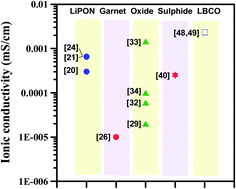Recent progress and future prospects of atomic layer deposition to prepare/modify solid-state electrolytes and interfaces between electrodes for next-generation lithium batteries†
Abstract
Lithium ion batteries (LIBs) are encouraging electrochemical devices with remarkable properties including a high energy/power density, fast charging capability, and low self-discharge rate. Further increase in energy density as well as safe usage is needed for next-generation LIBs in electric transportation vehicles. Solid-state electrolytes (SSEs) are very promising for high-performance LIBs since they enable improved safety along with increased energy density compared to flammable liquid organic electrolytes. However, utilizing SSEs with a Li metal anode is very challenging due to the possibility of undesired side reactions and the formation of an unstable solid-electrolyte interphase. Therefore, it is critical to enhance the stability of SSEs against the Li anode. One feasible approach is to form a thin and conductive interlayer between the Li anode and solid-state electrolyte. Atomic layer deposition (ALD) is a unique technique for conformal coating of complex 3D structures with finely controlled film thickness (at the atomic scale). ALD coating on the surface of SSEs can be adopted for engineering solid-electrolyte interfaces with desired attributes and improved stability. In this review paper, we have discussed recent progress in implementing the ALD technique for depositing thin layers on various SSE configurations including lithium phosphorus oxynitride (LiPON), garnets, oxides, perovskites, sulphides, Li3BO3–Li2CO3 (LBCO), and sodium super ionic conductors (NASICON). We have also highlighted the major areas for future research and development in the field. We believe that this review will be very helpful for directing future research on implementing ALD for synthesizing stable and high-performance SSEs with an engineered solid-electrolyte interface for next-generation electrochemical devices (e.g., Li-ion batteries, supercapacitors, and flow batteries).

- This article is part of the themed collection: Recent Review Articles


 Please wait while we load your content...
Please wait while we load your content...